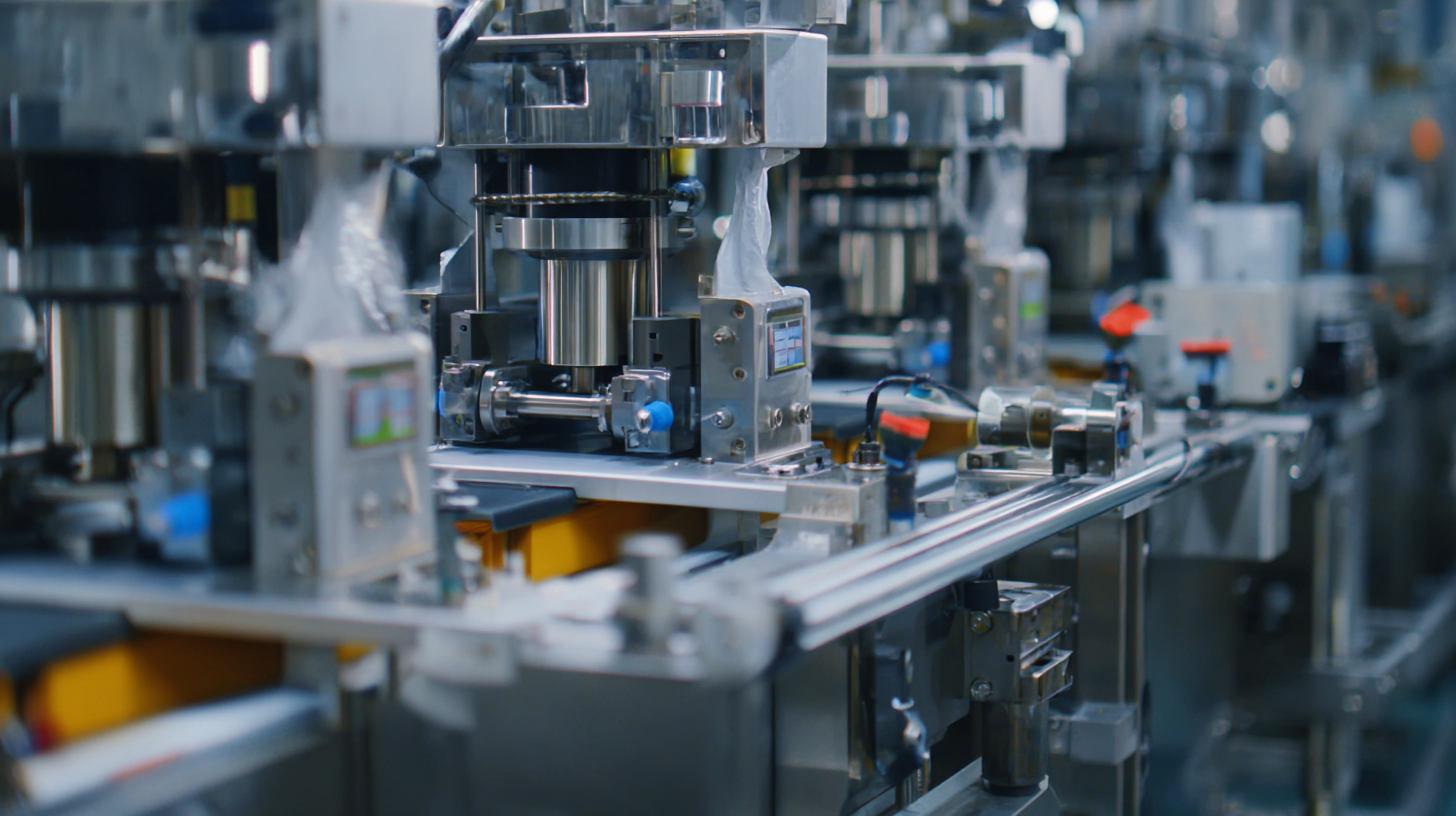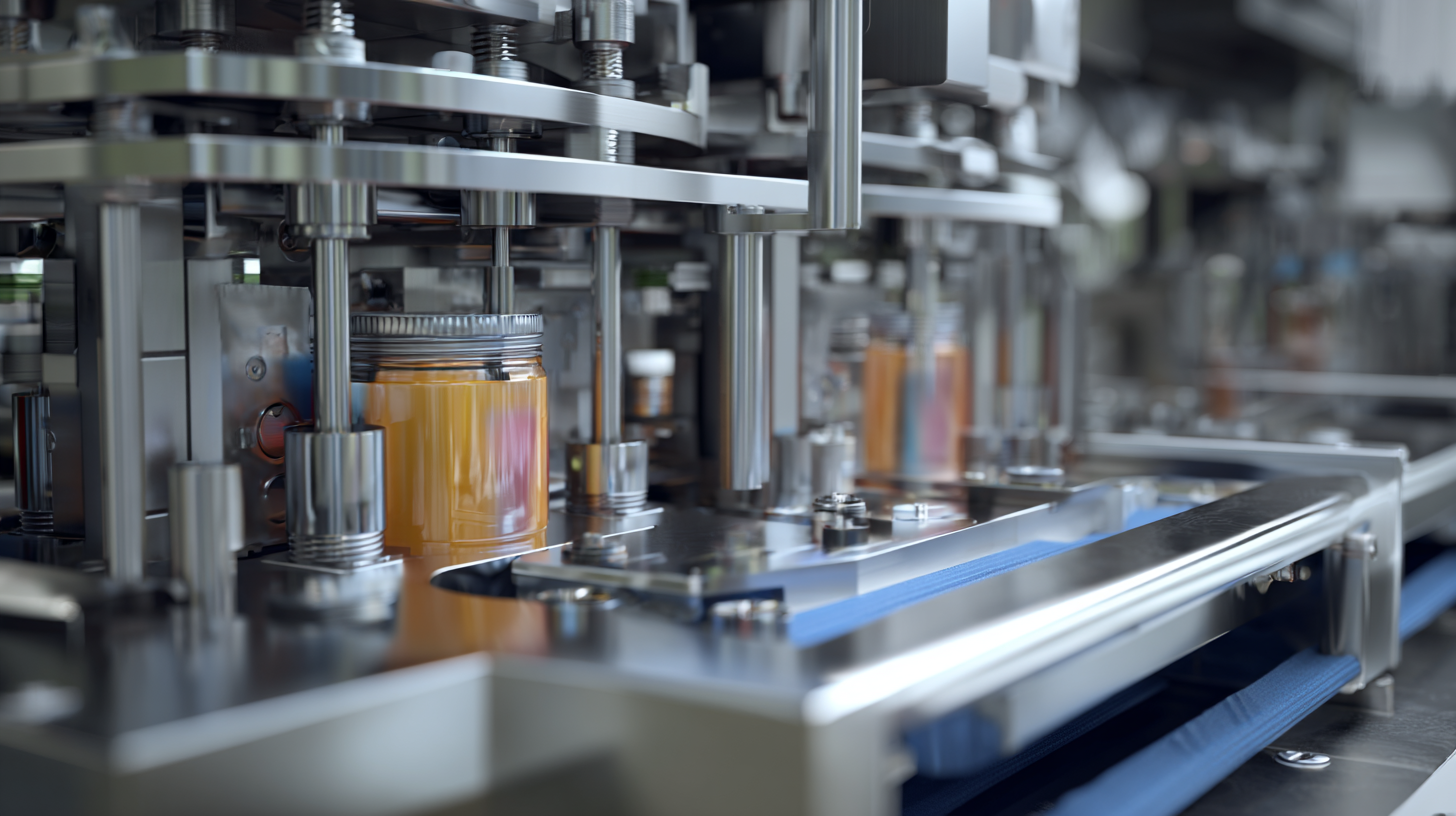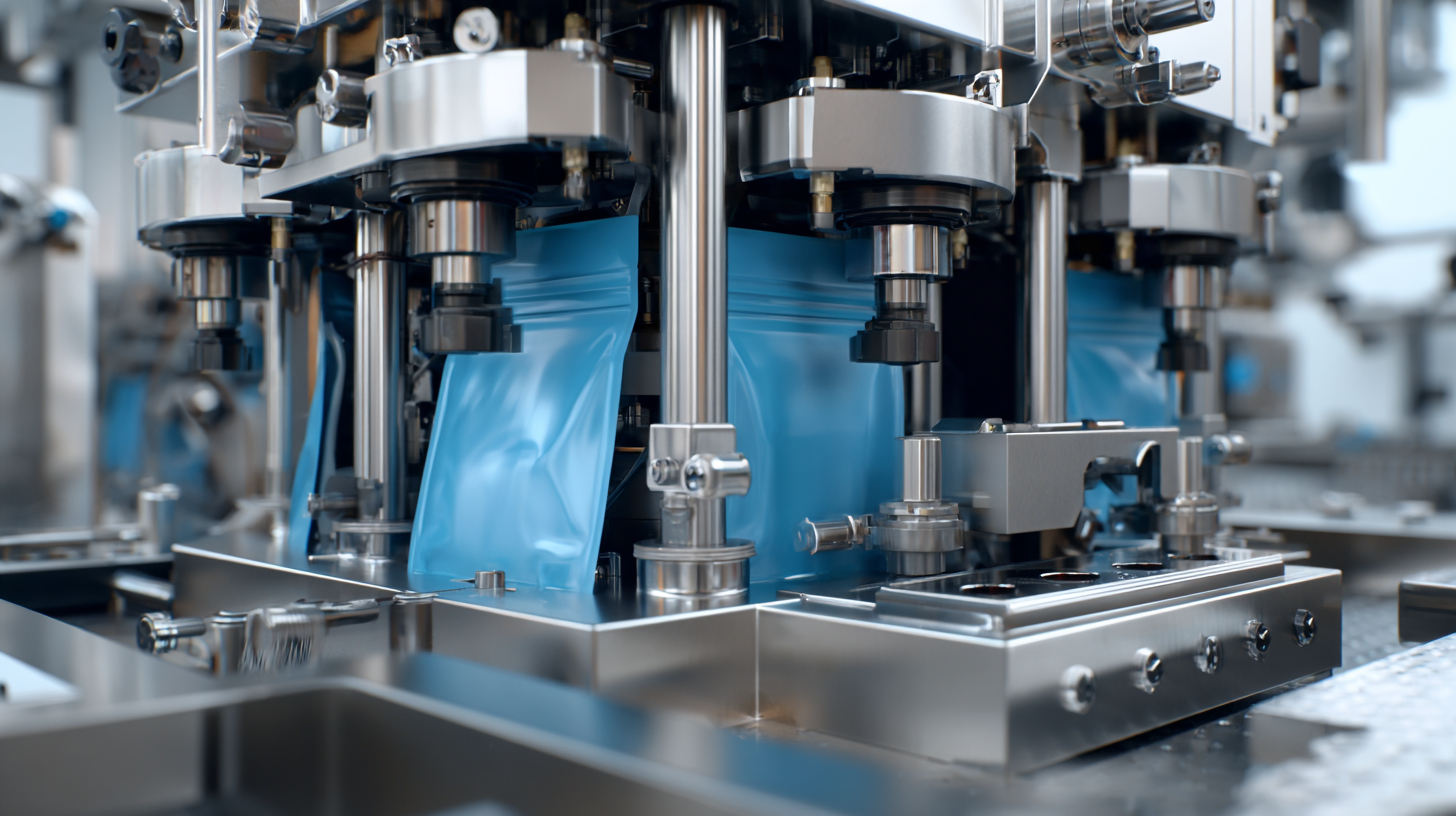Exploring the Future of Pouch Filling Machines in 2025 and How to Optimize Your Production Process
The pouch filling machine market is poised for significant advancements by 2025, driven by increasing demand for flexible packaging across various sectors, including food, pharmaceuticals, and personal care. According to a recent report from Smithers Pira, the global flexible packaging market is expected to reach $300 billion by 2024, highlighting a growing preference for pouches over traditional packaging due to their efficiency and sustainability.

As manufacturers prepare for this surge, optimizing production processes becomes imperative to leverage the full potential of pouch filling machines. This blog will explore the anticipated innovations in pouch filling technology, such as automated solutions and smart integration, and provide insights into how businesses can improve efficiency and reduce costs in their production lines. Emphasizing these trends will be crucial for companies aiming to stay competitive in the evolving landscape of packaging solutions.
The Rising Demand for Pouch Filling Machines: Market Growth Projections for 2025
The rising demand for pouch filling machines can be attributed to the growing need for efficient and sustainable packaging solutions across various industries. As market research projects a compound annual growth rate (CAGR) exceeding 4.5% from 2025 to 2032, this segment is expected to surpass USD 69.58 billion by 2032. The expansion is fueled by increasing consumer preference for flexible packaging, which offers convenience, reduced waste, and extended shelf life. Businesses are recognizing the importance of modernizing their production processes to meet these evolving market demands.
In parallel, the aseptic filling machine market is also witnessing significant growth, estimated to reach USD 1.8 billion in 2024, with a projected CAGR of 4.6% through 2034. This growth is largely driven by heightened awareness around food safety and contamination prevention. Similarly, the liquid packaging equipment market is set to expand, forecasted to grow at a remarkable rate of over 5.8% due to the rising consumption of liquid products across multiple sectors. As companies invest in advanced packaging technologies, optimizing their production processes becomes crucial to harness the benefits of these innovations and maintain competitiveness in a rapidly evolving marketplace.
Market Growth Projections for Pouch Filling Machines by 2025
The following chart illustrates the projected market growth for pouch filling machines from 2020 to 2025. The demand for these machines is expected to rise significantly due to the increasing need for efficient and automated packaging solutions.
Key Technological Innovations in Pouch Filling Machinery and Their Impact on Efficiency
In 2025, the pouch filling machine industry is projected to undergo transformative changes driven by key technological innovations. According to a recent report by Grand View Research, the global pouch filling machine market is expected to reach approximately $3.4 billion, reflecting a compound annual growth rate (CAGR) of 5.6% from 2020 to 2027. This growth can be attributed to advancements in automation, robotics, and smart technology integration, which collectively enhance operational efficiency.
One notable innovation is the implementation of artificial intelligence in pouch filling systems. AI-driven machines can optimize production processes by analyzing real-time data to predict maintenance needs and reduce downtime. For instance, a study by ResearchAndMarkets highlighted that AI can improve production efficiency by up to 30% through better resource allocation and workflow management. Moreover, the integration of IoT technology allows for seamless communication between machines, enabling predictive maintenance and increased production reliability. As manufacturers consider these advancements, they will find that embracing these innovations can lead to significant cost savings and improved product quality.
Exploring the Future of Pouch Filling Machines in 2025 and How to Optimize Your Production Process
| Technology | Impact on Efficiency | Key Features | Expected Adoption Rate (%) | Benefits |
|---|---|---|---|---|
| Automated Filling Systems | Increased speed by 30% | Precision dosing, minimal operator intervention | 75% | Reduced labor costs, improved consistency |
| Smart Sensors | Error reduction by 25% | Real-time monitoring, predictive maintenance | 60% | Enhanced reliability, minimized downtime |
| Modular Design | Flexibility to adapt to market changes | Easy upgrades and maintenance | 50% | Cost-effective scalability, shorter transitions |
| AI and Machine Learning | Productivity boost of 20% | Enhanced decision-making, optimized workflows | 40% | Increased output quality, better resource management |
| Sustainable Materials Usage | Reduced waste by 15% | Eco-friendly packaging solutions | 70% | Improved brand reputation, compliance with regulations |
Sustainability Trends: How Eco-Friendly Pouch Filling Solutions are Shaping Production
As businesses increasingly focus on sustainability, eco-friendly pouch filling solutions are becoming integral to production processes. The shift towards more sustainable packaging options, particularly flexible paper packaging, reflects consumers' growing demand for environmentally responsible choices. This trend is supported by the rising preference for biodegradable materials and recyclable designs that enhance brand image while minimizing environmental impact.

To optimize your production process, consider incorporating the following tips: first, evaluate your current packaging materials and transition to more sustainable alternatives like flexible paper or compostable wrappers. This not only reduces waste but also appeals to the increasing number of environmentally-conscious consumers. Second, invest in advanced pouch filling machines designed to handle eco-friendly materials efficiently. These machines can improve your production speed while maintaining product integrity.
Moreover, staying informed about evolving packaging innovations is essential. Attend industry events and participate in forums that discuss eco-friendly practices in packaging. Engaging with other businesses and consumers can provide valuable insights into sustainable trends and help refine your product offerings to meet market demands.
Optimizing Production Processes: Data-Driven Strategies for Enhanced Pouch Filling Operations
In the evolving landscape of pouch filling machines, leveraging data-driven strategies is essential for optimizing production processes. Reports indicate that the global market for pouch filling machinery is expected to grow at a CAGR of 5.9%, reaching USD 4.3 billion by 2025. This growth underscores the importance of implementing efficient operations to remain competitive. Key strategies involve focusing on real-time data analytics, which can identify bottlenecks and improve throughput by up to 30% in some cases.
Tip: Regularly assess your machine performance data and adjust your maintenance schedules accordingly. Predictive maintenance can reduce downtime by 20%, allowing for smoother operations and enhanced production rates.
Moreover, integrating automation in pouch filling processes not only streamlines production but also reduces labor costs by about 15%. By adopting smart technologies, manufacturers can achieve higher accuracy in filling, which is particularly crucial for sectors like food and pharmaceuticals where precision is vital.
Tip: Invest in employee training programs that focus on new technologies and data analytics. Empowering your workforce with the skills to harness these tools can lead to a more agile production environment, enhancing overall efficiency.
Case Studies: Successful Implementations of Pouch Filling Machines in Various Industries
In recent years, the use of pouch filling machines has surged across various industries, driven by the increased demand for flexible packaging solutions. A report by Smithers Pira indicates that the global pouch packaging market is expected to reach $46 billion by 2025, reflecting a CAGR of approximately 5.9%. This growth is largely attributed to the enhancements in automation and technology, enabling manufacturers to optimize their production processes effectively.

A noteworthy example can be seen in the food and beverage sector, where companies have adopted advanced pouch filling systems that improve accuracy and efficiency. By employing innovative technology, such as computer vision and artificial intelligence, manufacturers are able to minimize product waste and enhance quality control.
Case studies highlight instances where these machines have significantly reduced production time, with some companies reporting efficiency improvements of over 30% after implementing automation solutions.
Moreover, the recent recognition of skilled workers, such as the young engineer leading a team of talented individuals to integrate intelligent systems into machinery, underscores the importance of human expertise in optimizing these advanced systems. As the pouch filling industry continues to evolve, the collaboration between innovative technologies and skilled professionals will be key to achieving operational excellence and sustaining growth.

